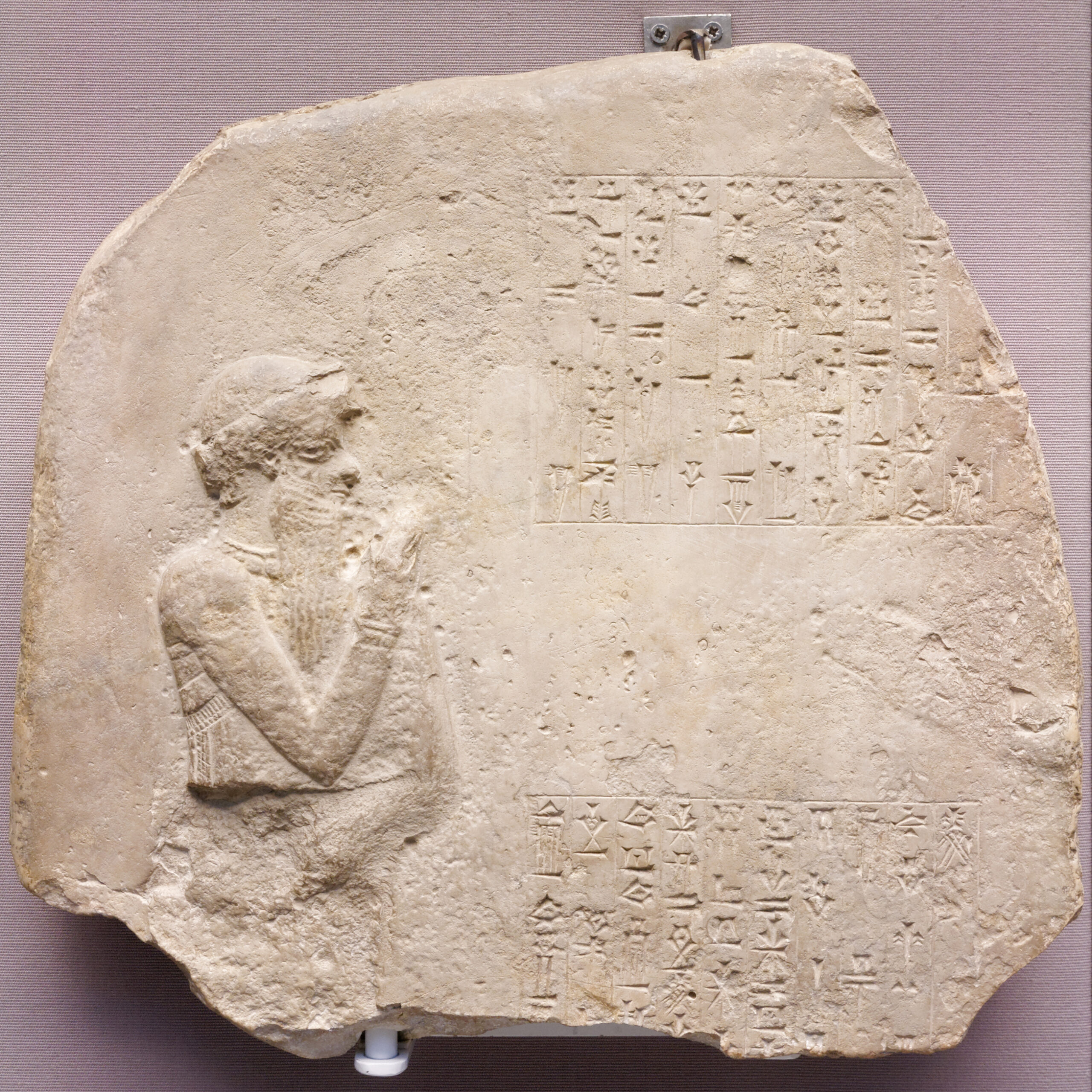
Hammurabi, king of Babylon and perhaps the most famous Amorite, depicted on a votive monument from the site of Abu Habba in Iraq.
Credit: © Marie-Lan Nguyen / Wikimedia Commons / CC-BY 2.5
“Son of man, make known to Jerusalem her abominations, and say, ‘Thus says the Lord God to Jerusalem: Your origin and your birth are of the land of the Canaanites; your father was an Amorite and your mother a Hittite.’” (Ezekiel 16: 2–3 ESV)
In this famous biblical passage, the prophet Ezekiel is delivering a message calling out the sins of the city of Jerusalem, and by extension the nation of which it was the capital—the Kingdom of Judah. As is often the case in prophetic and apocalyptic literature, the capital city is personified as an adulterous woman (for comparison, see Revelation 17–18). In this particular case, Jerusalem is described as an orphaned daughter of an Amorite and a Hittite, cast out and left for dead, whom Yahweh adopts as his own and makes a queen. This “from rags to riches” story is filled with betrayal that parallels the history of ancient Israel presented in the pages of the Hebrew Bible. The most intriguing notion found in the passage, however, is the claim that Jerusalem, and perhaps the kingdoms of Israel and Judah as a whole, have their origins among the peoples of Canaan—in particular, the Amorites and the Hittites.
The Hittites are well known to history. With an empire that rivaled Egypt’s during the Late Bronze Age (c. 1550–1200 BCE), the Hittites had great influence on the peoples of the northern Levant. But who were the Amorites in the Bible, Jerusalem’s other supposed progenitor?

Early references from the Ur III period (2112–2004 BCE) in Mesopotamia use the term “Amorite” to denote groups of people that came from abroad and were considered the “other” in regards to traditional Sumerian culture. Usually painted as barbarians from the arid highland regions to the west, these peoples were considered second-class citizens by the people of Ur. In one particular writing known as “The Marriage of Martu,” the Amorites are personified in the character of Martu (or Amurru), a man no one should want their daughter to marry—his people eat forbidden food, are always roaming, wear animal skins, and live in tents. Essentially, the Amorites were considered pastoralist barbarians who shunned Sumerian culture and had no place among proper society. Such was their stigma, even though the Martu character actually lived in the city, paid taxes, and was generally a part of their culture.
The characteristic “otherness” of the Amorites continued into later centuries. Writings found at Mari (in eastern Syria) and dating to the reign of Zimri-Lim (c. 1775–1761 BCE) make a cultural distinction between Akkadians and Amorites, and that the king considered himself the ruler of both groups. It is possible that the Amorites of this period were the various pastoral groups, who may or may not have considered themselves ethnically and culturally related, living in the areas within Mari’s sphere of influence. The Mari archive also references a land of Amurrum in the west, which was probably situated in the mountain regions between the Mediterranean and the Orontes River valley.
Perhaps the most famous Amorite is King Hammurabi (reigned c. 1792–1750 BCE). Known for his law code, his predecessors were instrumental in establishing the city of Babylon, and Hammurabi himself would go on to take control of the entirety of Mesopotamia, including Mari.
By the Amarna period in Egypt (1353–1336 BCE), the term Apiru had largely replaced “Amorite” as a designation for those who were culturally “othered.” These were generic names given to different groups who lived on the fringes of “civilized” society.
In the Iron Age, the “barbarian other” moniker was given to the Arameans, who were seen by the Assyrian king Tiglath-Pileser I as a mass of people unaffiliated with any particular kingdom. Most likely pastoralists, the Arameans are listed among the king’s defeated enemies during his western campaigns. They could be found in the Euphrates River valley across all the lands of modern Syria and the mountains of Lebanon. Like the Amorites before them, the Arameans would go on to found their own city-states and kingdoms, in particular, the kingdom of Aram-Damascus that plays a major role in the Book of Kings.
Given the history of the Amorites, then, is their biblical depiction as the “father of Jerusalem” justified? The author of Deuteronomy seemed to think so when he penned, “A wandering Aramean was my father. And he went down into Egypt and sojourned there, few in number, and there he became a nation, great, mighty, and populous” (Deuteronomy 26:5 ESV). In terms of the biblical narrative, the patriarchs would most certainly have been considered “Amorites” in the eyes of their city-dwelling neighbors. This is especially true of Abram, who is considered to have had cultural ties to Harran—a land often associated with Amorites—yet lived in Ur.
In the pages of the Hebrew Bible, however, the Amorites are not painted in the best light. The Amorites in the Bible are usually found in the traditional listing of the inhabitants of Canaan alongside the Canaanites, Hittites, Perizzites, Hivites, and Jebusites—Israel’s traditional enemies before the time of the monarchy.
For more on the Amorites in the Bible, see “The Amorites and the Bible” by Aaron A. Burke, published in the Summer 2023 issue of Biblical Archaeology Review.
Subscribers: Read the full piece, “The Amorites and the Bible” by Aaron A. Burke, published in the Summer 2023 issue of Biblical Archaeology Review. Not a BAS Library or All-Access Member yet? Join today.
Read more in Bible History Daily:
The post Who Were the Amorites? first appeared on Biblical Archaeology Society.
The post Who Were the Amorites? appeared first on Biblical Archaeology Society.


0 Commentaires